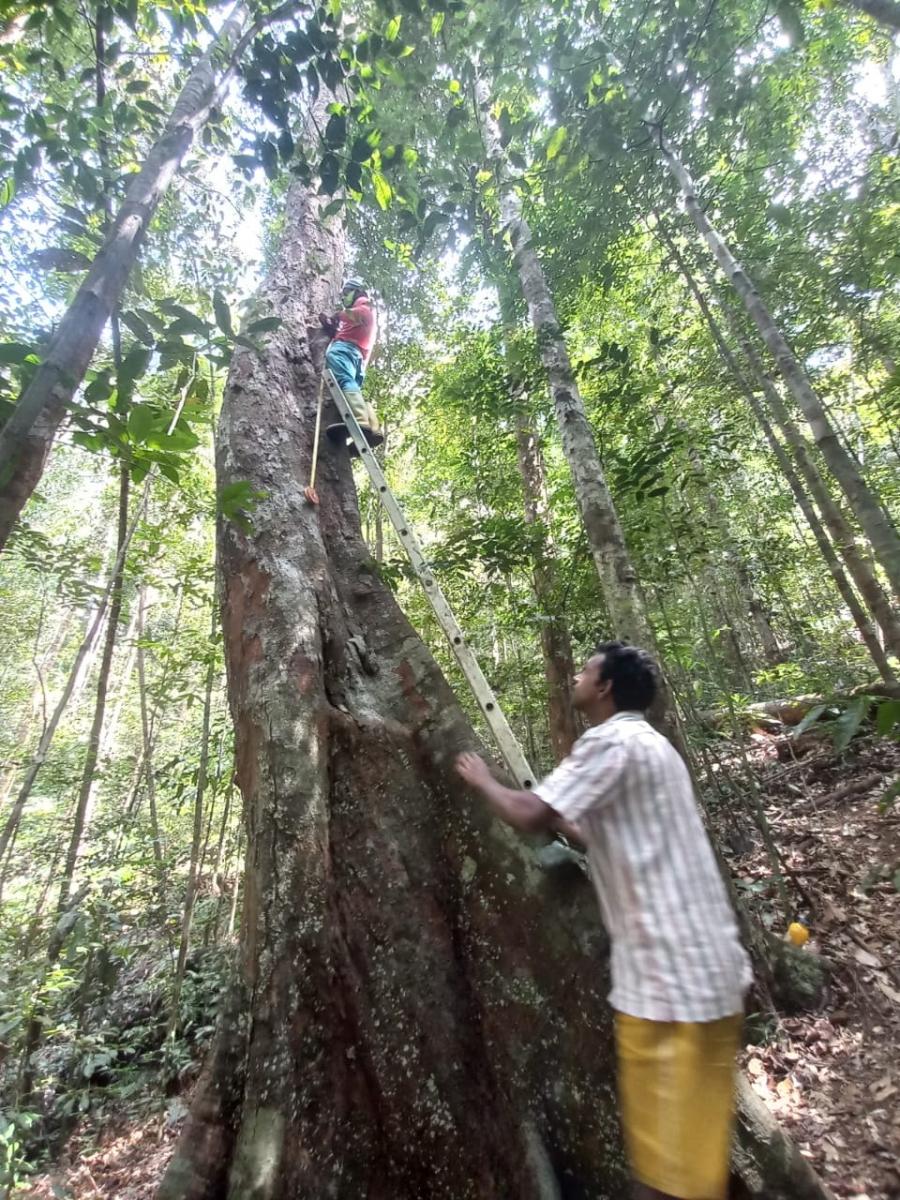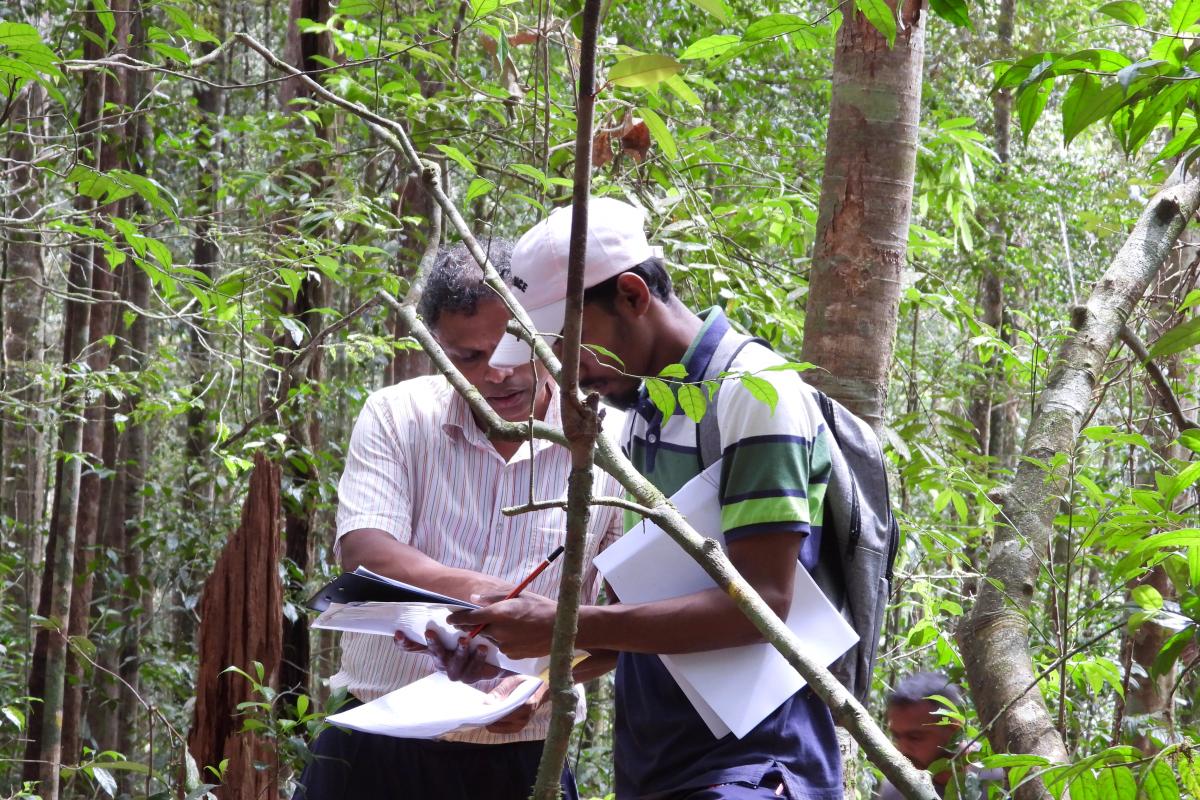Sinharaja Forest Plot: 6th Census Successfully Completed!

The 6th census of the Sinharaja Plot was completed on May 8, 2025, having commenced on January 20, 2024. Five field teams were deployed, and the census took 15 months to complete. During this period, our field crew censused over 198,000 stems (both living and dead), including 22,599 newly recorded trees and an additional 6,334 new secondary stems. The census was delayed by two months compared to the fifth census, primarily due to prolonged periods of continuous rainfall and the presence of roaming elephants in the Sinharaja area. This important work was financially supported by ForestGEO and coordinated by the Uva Wellassa University of Sri Lanka. Data entry is currently underway.

Most dipterocarp species flowered during the 2024–2025 period. In Sri Lanka, mass flowering events of dipterocarps occur irregularly, typically at intervals of 3 to 10 years. These events, known as general flowering, involve the simultaneous blooming of nearly all dipterocarp species, along with representatives from other plant families. During such events, a significant proportion of mature individuals and canopy tree species in the forest participate in flowering, making it a remarkable ecological phenomenon.


Congratulations to the Sinharaja team on another successful census!




